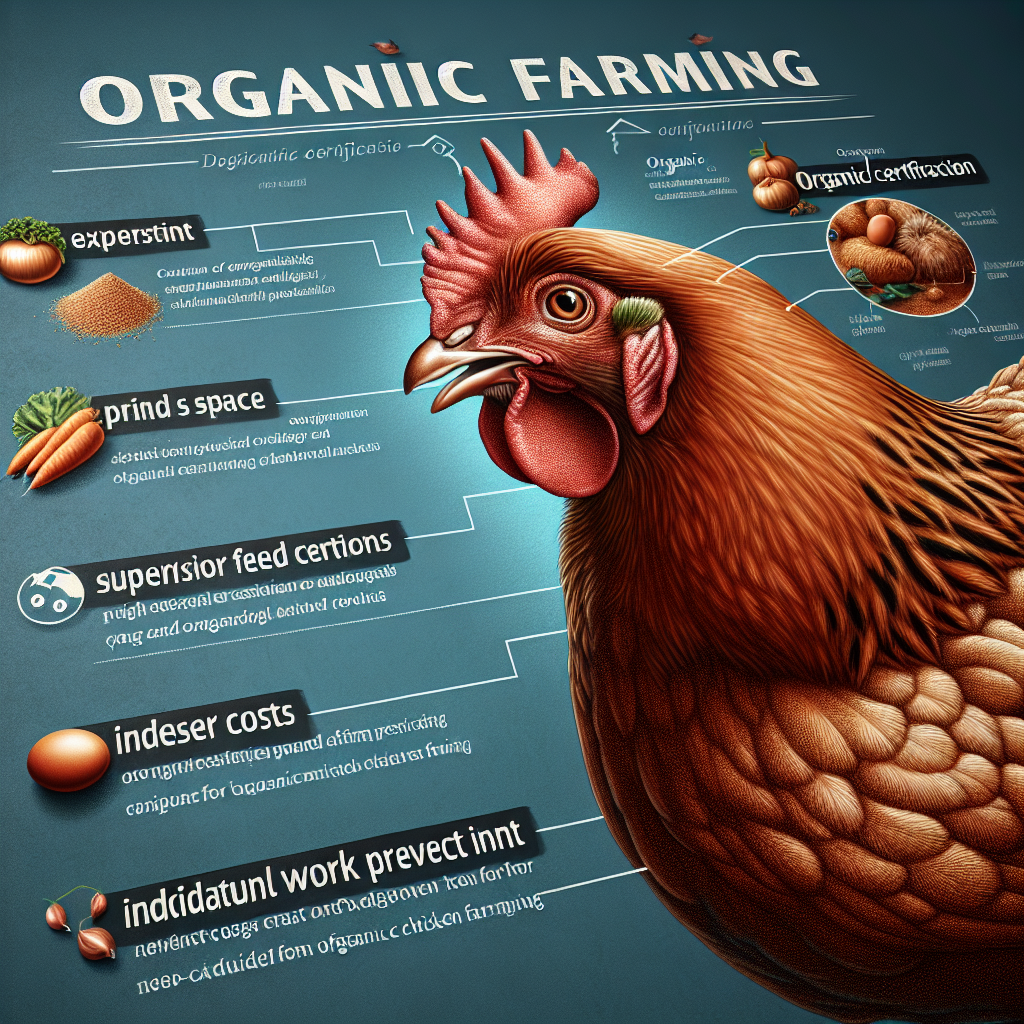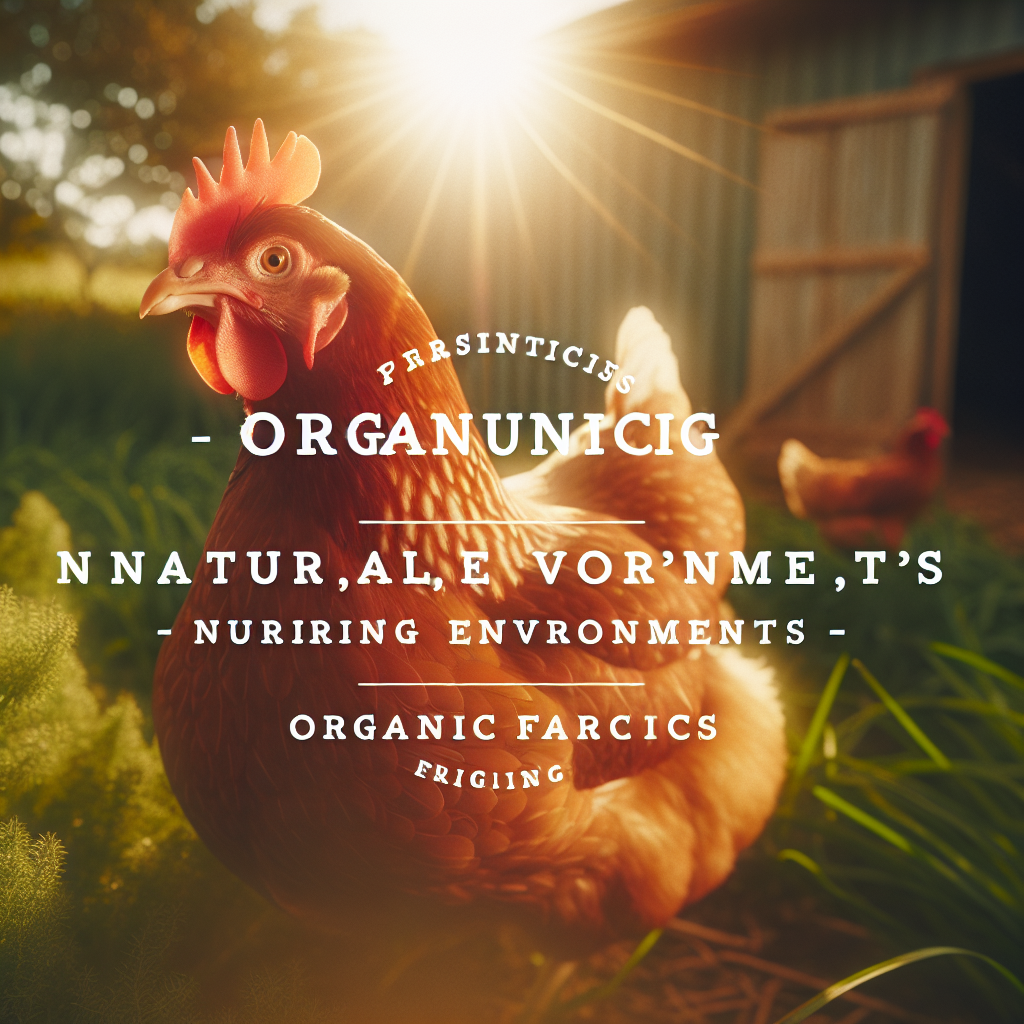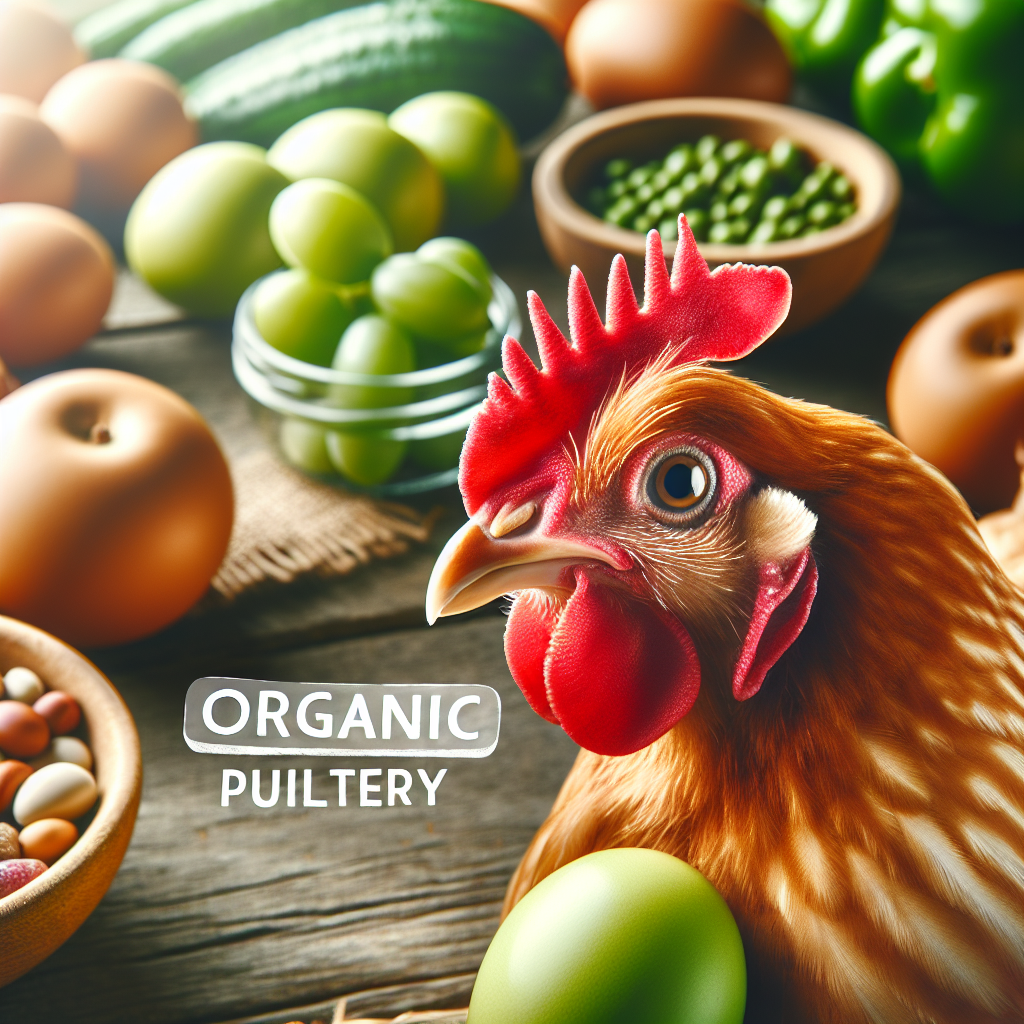Are you curious about the financial implications of organic chicken farming compared to conventional methods? In this article, we will explore how the costs of these two farming approaches stack up against each other. Discover the potential differences in expenses and get a better understanding of the economic aspects surrounding organic chicken farming.
Costs of Organic Chicken Farming
Investment in Organic Certification
One of the costs associated with organic chicken farming is the investment in organic certification. In order to label their products as organic, farmers must go through a rigorous certification process, which can be quite expensive. This involves regular inspections, paperwork, and additional requirements to meet the organic standards set by regulatory bodies. While this upfront cost can be substantial, it is often considered a worthwhile investment, as it provides credibility and assurance to consumers who are willing to pay a premium for organic products.
Higher Feed Costs
Another cost consideration in organic chicken farming is the higher feed costs. Organic chicken farmers are required to use feed that is made from organically grown grains and other natural ingredients. These organic feeds tend to be more expensive than conventional options, as they require sourcing from certified organic suppliers. Additionally, the production of organic feed involves adhering to stringent regulations and quality control measures, further driving up the costs. However, many organic chicken farmers argue that the higher costs of organic feed are offset by the premium price they can charge for their organic poultry products, making it a worthwhile investment in the long run.
Greater Labor Expenses
Organic chicken farming often demands greater labor expenses compared to conventional methods. Organic practices typically involve more hands-on management, such as providing additional outdoor space for the chickens to roam and encouraging natural behaviors. This necessitates more time and effort from farmers and their workers, which translates into increased labor costs. However, the benefits of these practices, such as improved animal welfare and reduced stress on the chickens, are often seen as valuable enough to justify the additional expenses.
Increased Disease Prevention Measures
One of the major costs associated with organic chicken farming is the implementation of increased disease prevention measures. As organic farms rely on natural and sustainable practices, they cannot use commercial pesticides or antibiotics to control diseases. Instead, organic chicken farmers must focus on preventing diseases through alternative methods such as strict biosecurity protocols, proper sanitation, and optimized nutrition. While these measures can be time-consuming and costly to implement, they contribute to the overall health and wellbeing of the chickens, aligning with the principles of organic farming.
Additional Space Requirements
Organic chicken farming also involves additional space requirements compared to conventional methods. Organic standards often mandate that chickens have access to outdoor areas, allowing them to exhibit natural behaviors and engage in free-range grazing. This means that organic farmers must allocate more land for their flocks to roam and forage, which may require additional purchases or leasing of land. While the need for more space can increase overall operating costs, it is an essential aspect of organic farming that contributes to the welfare of the animals and the quality of the final product.
Benefits of Organic Chicken Farming
Premium Price for Organic Products
One of the significant benefits of organic chicken farming is the ability to command a premium price for organic products. Demand for organic poultry products has been steadily increasing as consumers become more health-conscious and environmentally aware. People are willing to pay extra for organic chicken meat and eggs because they believe it to be of higher quality, free from synthetic chemicals and genetically modified organisms. The ability to sell organic products at a premium price helps offset the higher costs associated with organic farming, making it financially viable for many farmers.
Reduced Dependency on Chemicals
Organic chicken farming offers the benefit of reduced dependency on chemicals. Unlike conventional methods that rely heavily on synthetic pesticides, fertilizers, and antibiotics, organic chicken farming promotes the use of natural and sustainable practices. This includes using organic feed, adopting environmentally friendly pest control methods, and avoiding routine antibiotic use. By reducing the reliance on chemicals, organic farming minimizes the potential risks to human health and the environment, creating a safer and more sustainable approach to chicken production.
Healthier and More Sustainable Practices
Organic chicken farming emphasizes healthier and more sustainable practices compared to conventional methods. Organic farmers prioritize the well-being of the chickens, ensuring they have access to natural living conditions, fresh air, and ample space to roam. They also avoid using genetically modified organisms (GMOs) and artificial growth hormones, promoting the production of chickens that are raised in a more natural and humane manner. This commitment to sustainability extends beyond the farm, as organic farming practices focus on preserving soil health, protecting water resources, and supporting biodiversity.
Increased Consumer Demand
The growing consumer demand for organic products is another significant benefit of organic chicken farming. People are increasingly aware of the potential health and environmental risks associated with conventional farming practices, leading them to seek out organic alternatives. Organic chicken products are perceived to be healthier, safer, and more environmentally friendly, making them highly sought after in the market. This increased consumer demand provides organic chicken farmers with a reliable customer base, enabling them to sell their products at a premium and potentially achieve higher profits.
Costs of Conventional Chicken Farming
Lower Initial Investment
One of the cost advantages of conventional chicken farming is the lower initial investment required. Conventional methods typically involve intensive farming techniques that prioritize efficiency and productivity over organic standards. As a result, conventional chicken farmers can often start their operations with less upfront capital. They do not need to invest in organic certification, premium feed, or extensive outdoor space, which significantly reduces the initial financial burden. This lower entry barrier makes conventional chicken farming a more accessible option for those with limited resources or smaller-scale operations.
Lower Feed Costs
Conventional chicken farming generally comes with lower feed costs compared to organic methods. Conventional farmers have access to a wide range of commercially available, competitively priced feed options that are formulated to meet the nutritional needs of chickens. These feeds often contain conventional grains, which are less expensive to produce than certified organic grains. By utilizing cost-effective feed solutions, conventional farmers can minimize the overall expenses associated with chicken farming and maintain a competitive edge in terms of pricing their products.
Lower Labor Expenses
Another cost advantage of conventional chicken farming is lower labor expenses. Conventional methods typically involve more standardized and automated systems, allowing for streamlined operations and reduced labor requirements. Chicken houses and equipment are designed to optimize efficiency and minimize the need for manual intervention. Additionally, conventional farmers may rely on industrial machinery for feed delivery, waste management, and other tasks. These labor-saving measures help to minimize labor expenses and contribute to the overall cost-efficiency of conventional chicken farming.
Reliance on Antibiotics
A significant cost associated with conventional chicken farming is the reliance on antibiotics. Conventional farmers often use antibiotics as a preventive measure or growth promoter to address the potential risks of disease outbreaks or to accelerate growth rates. However, the use of antibiotics in animal agriculture has raised concerns about the development of antibiotic resistance in both animals and humans. To mitigate this risk, regulations are increasingly restricting or phasing out the use of certain antibiotics in livestock production. As a result, conventional farmers may face additional costs in adapting their practices to comply with evolving regulations.
Widespread Pollution and Environmental Impact
Conventional chicken farming has a notable environmental cost due to widespread pollution and environmental impact. This farming method typically involves concentrated animal feeding operations (CAFOs) and generates significant amounts of animal waste. If not properly managed, these waste products can contribute to water pollution, soil degradation, and air pollution. Moreover, conventional farming practices often rely on synthetic fertilizers and pesticides, which can have negative impacts on water quality and biodiversity. The costs associated with managing and mitigating these environmental challenges are substantial and can lead to long-term consequences for the environment and surrounding communities.
Comparison of Costs
Initial Investment
When comparing the costs between organic and conventional chicken farming, it becomes evident that the initial investment differs significantly. Organic chicken farming requires a higher initial investment due to the expenses associated with organic certification, premium feed, additional space requirements, and disease prevention measures. On the other hand, conventional chicken farming boasts a lower initial investment, as it does not require organic certification and operates with fewer space requirements.
Feed Costs
Feed costs also vary between organic and conventional methods. Organic chicken farming incurs higher feed costs due to the use of certified organic feed, which tends to be more expensive than conventional feed. Conventional chicken farming, however, benefits from lower feed costs by utilizing competitively priced, conventional feed options.
Labor Expenses
Labor expenses differ between organic and conventional chicken farming practices. Organic farming requires greater labor investment, as it involves more hands-on management, disease prevention measures, and adherence to organic standards. In contrast, conventional farming employs labor-saving measures, automated systems, and standardized processes, resulting in lower labor expenses.
Disease Prevention
Organic chicken farming incurs additional costs for disease prevention measures, as it does not rely on antibiotics or synthetic pesticides. Instead, organic farmers implement rigorous biosecurity protocols, sanitation practices, and optimized nutrition to prevent diseases naturally. Conventional chicken farming, on the other hand, relies on antibiotics for disease prevention, which can incur costs associated with compliance with evolving regulations and the potential risks of antibiotic resistance.
Environmental Impact
The environmental impact and associated costs differ significantly between organic and conventional chicken farming. Organic farming practices focus on sustainability and minimizing environmental impact, while conventional farming methods tend to generate pollution and contribute to environmental degradation. The costs of managing and mitigating environmental challenges, such as water and air pollution, waste management, and the use of synthetic fertilizers and pesticides, are significant in conventional farming and not present in the same capacity in organic farming.
In conclusion, when comparing the costs of organic and conventional chicken farming, it is evident that each method has its own set of associated expenses. Organic chicken farming requires an initial investment in organic certification, premium feed, additional labor, disease prevention measures, and space requirements. However, organic farming offers the benefit of commanding a premium price for organic products, reduced dependency on chemicals, healthier and more sustainable practices, and increased consumer demand. On the other hand, conventional chicken farming boasts a lower initial investment, lower feed costs, lower labor expenses, but relies heavily on antibiotics and contributes to widespread pollution and environmental impact. It is essential for farmers to carefully consider and weigh the costs and benefits of each method to determine the most suitable approach for their specific circumstances and goals in chicken farming.




